When watching the Japanese hit movie, "Crying Out Love, in the Center of the World," it's hard not to cry - sophisticated acting, a refined screenplay and a resonant theme combine to create a lasting impression. By contrast, when watching the Korean remake "My Girl and I," it's hard to cry.
Well, if you really want to cry watching the Korean version of the melodrama, it's probably safe to cry over the lower-than-expected quality of the movie itself, not because of some moving scenes that tug at your heartstrings.
"My Girl and I" features the well-known plot of an ill-fated couple. Su-ho (Cha Tae-hyeon) is a plain high school boy, and Su-eun (Song Hye-kyo) is a bright and beautiful girl in the same school. For some unknown reason, Su-eun has a crush on the boy, and for equally mysterious reasons she rescues Su-ho in the sea (though he doesn't know who actually saved him).
In the process, Su-eun loses her pager. When she discloses the relationship with Su-ho at school, despite envy and disbelief from other classmates, she asks Su-ho to buy her a pager so that they can communicate with each other through voice messages - a secret communication channel since So-eun's parents are quite strict. The way the couple develops affection is bearable, helped by images of a beautiful seaside village and equally enchanting coastlines. Supporting characters like Su-ho's grandfather (Lee Soon-jae) jazz up the otherwise too simplified storyline.
But soft and cartoonish images that reflect Korean local features in Geojae Island are all there is to see. The movie's plot doesn't provide any surprise or meaningful twist that is comparable to the Japanese version by director Isao Yukisada which sold more than 10 million tickets.
In the second half of the movie, especially after Su-eun comes down with a fatal disease, the plot only just moves forward. Even when the story trudges along, the characters and their acting are not that convincing - all the more so if you already watched the Japanese version.
The biggest problem is director Jeong Yoon-soo's strategy to use a safe path only. He succeed in casting two of the country's top-rated actors, and when it comes to the rising female star Song Hye-kyo, this is her debut feature film.
Song's debut for the silver screen through this movie attracted much media attention, something that definitely boosted the profile of the film itself among the public. But the director relied too much on the two actors while failing to upgrade the story itself in comparison with the Japanese rendition.
Rather the Korean version is far inferior to the Japanese movie in every respect. The actors are less believable: Cha, who is 29 years old, plays a high school student, and Song's hospital scene is utterly unrealistic because her hair remains intact (in the Japanese version, the female character's hair is lost due to a terminal illness)...
The bigger issue is the broader theme. In the original, the female character wants to pull off her dream - visiting Uluru in Australia, the sacred ground of Aboriginals or what she calls "the center of the world."
In the Korean version, there's no such "center of the world." Nor is there any memorable song that can be compared to Japanese singer Ken Hirai's "Hitomi Wo Tojite," which evokes powerful emotions at the end of the Japanese film.
In the post-preview news conference, both Cha and Song said they haven't watched the Japanese movie in order to focus on their roles and create their own style. They should have watched "Crying Out Love, in the Center of the World." It's not too late. If they watch the Japanese version now, they will definitely cry a lot - for unromantic reasons.
-By Yang Sung-jin
But really, the gist of the plot itself, no matter how many times it is remade, and how many times it changes here and there, is extremely beautiful and ever so bittersweet.
The Korean version is much more comical and exeggerated, with the male protagonist having an extremely fat sister, and an ugly yet egotistical nerd for a friend, among other crazy and nonsensical personalities and antics.
The Japanese version is much more innocent and realistic, and a lot more believable as well- most probably because the young Japanese actors act the age they truly are, whereas Song Hae Gyo and Cha Tae Hyeon have to pretend to be teenagers when they're well past that age of naivety already.
However, one thing I liked about the Korean version much more than the Japanese one was how the director chose to remould and beef up the love story of the male protagonist's grandfather. The mummified body, the black and white shots, make it an exquisite sideline to the main plot. I also like how the female protagonist saw herself on Geojae Island gazing at the blue sky with white clouds right before she passed away. Because even though she never managed to go there a second time, it's as though her soul soars over there. There is that deep impression that their love will last forever, that their love will transcend a lifetime and be eternal. Whereas in the Japanese version, he finally loves another.
But both contain seamless motion and movement from one shot to another, encompassing breathtaking scenery with picture perfect angles. It's a total feast for the eyes. ^^

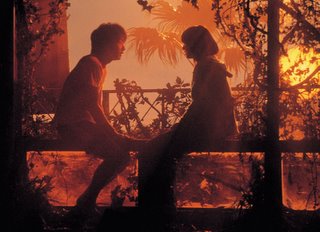
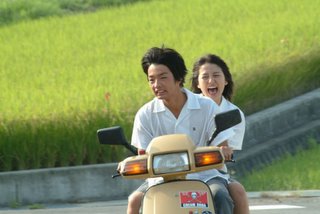

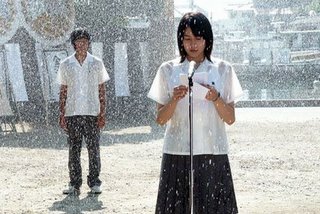
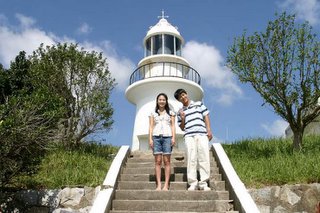
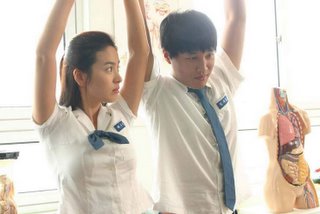
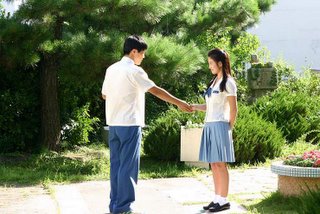

1 comment:
i read the book halfway and found it too draggy to read on . >_<
Post a Comment